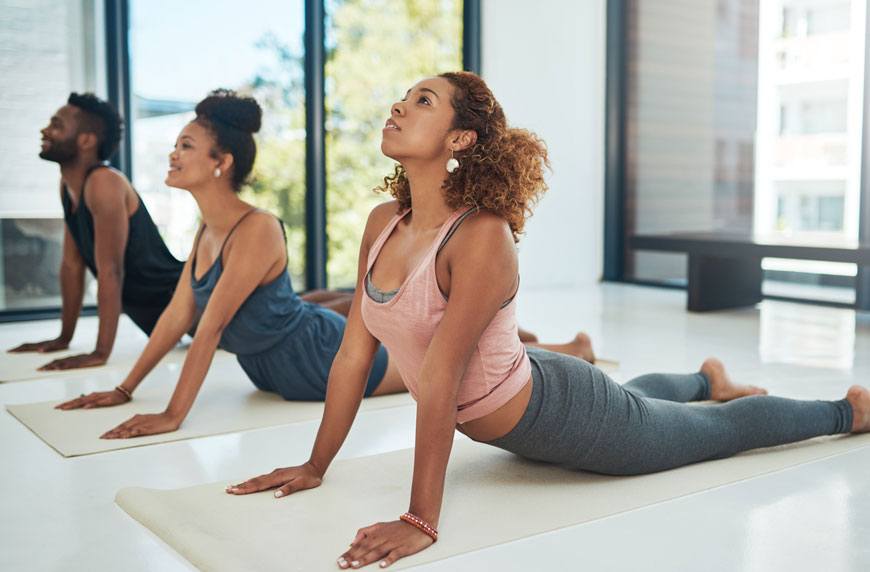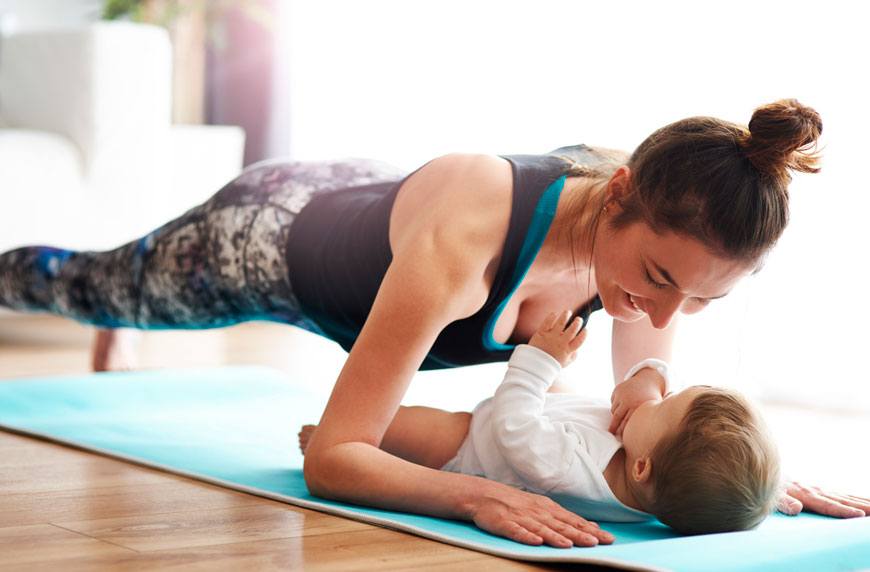In Modern Day Yoga, Should We Be Valuing Function Over 5,000-Year-Old Form?
As of 2016, an estimated 36.7 million Americans practiced yoga, 72 percent of whom were women. But if you turn back the clock to the earliest record of the practice in 2700 BCE, the lives of early yogis were much, much different. "If we look at the origins of yoga asana and look at the population that was practicing it, it was not mostly women. It was mostly young boys, and their lifestyle was probably significantly different than our lifestyle today," says Lara Heimann, a physical therapist and yoga teacher in New Jersey. "So there are things that bodies can do that they used to do back then, and there are some things that—yeah—don’t make sense." Yet, the practice endures and it just. keeps. iterating.
As of 2016, an estimated 36.7 million Americans practiced yoga, 72 percent of whom were women.
Google "yoga near me" in any metropolitan hotspot across the U.S., and your browser will be flooded with options: hot, Kundalini, aerial, and this list goes on, and on, (and on). Nowhere near a city? Not a problem. Rolling out your mat at home is a cinch thanks to the countless on-demand options like apps, e-books, and subscriptions. (Not to mention the 254 million yoga vids on YouTube.)
When you have a gargantuan number of choices at your disposal that draw from teachings both ancient and cutting-edge, cherry picking which poses and flows remain relevant to your modern-day body might feel like an arduous task. Our daily routines, and with it the movements we go through each day are worlds apart from how they were at the inception. So, just how should the yoga evolve along with us? One school of thought is that we should pack our practices with functional movements that compliment our daily lives.

Practicing yoga with function in mind, not form
According to Heimann, you can think about functional movement as having "the specific intention of carryover in your daily life." Say you recorded a 24-hour time-lapse of yourself. You sit down at your desk and stand back up when you need a coffee refill. You'd witness laundry-folding and sleeping. You get the picture. What you probably wouldn't see? The splits, crow pose, and back bends that turn your body inside-out. Those asanas just don't mimic the patterns our bodies rely on in everyday life.

{{post.sponsorText}}
Now, I know what you're thinking here, "Wait a minute! Isn't part of yoga countering and balancing out the way I move 24/7?" So much of the conversation around the practice deems it the yin to so much of our day-to-day yang, but Heimann says movement habits are more complex than that on a physiological level.
"The connective tissues and muscles that attach and surround your bones are pulled in certain ways based on habitual postures and movement patterns," she tells me. "These areas don’t just get realigned by going into an extreme range of motion." Teaching your body functional, sustainable movement isn't about countering old patterns. It's about introducing new, more sustainable ones.
Think about it like this: If you put laundry (say, leggings) in the washer and forgot about it for a few days, you wouldn't pull the load out, iron it, and don a pair. The fabric would feel too starchy. Instead, you'd need re-wash the whole pile of leggings to get it right.
"Your body will attempt to move into a yoga posture in the way it is able, but that often reinforces, not remedies the imbalanced modern day lifestyle posture and movement pattern," she adds. Does that mean that every last "advanced" posture has no place in our yoga practice? Not necessarily. But according to Heimann, it does mean we need to adopt a critical mindset about our motivations behind practicing certain poses.
"What I really want to tell people is that you can get that feeling of space in a different way that is going to serve you not only today, but long-term." —Lara Heimann, yoga teacher and physical therapist
"In every movement practice, every wellness practice, every philosophical and every political practice, we’re always evolving and changing," says the physical therapist. Yoga is no exception. It's pretty cool when someone can put their leg behind their head, no argument. But Heimann believes that the advanced poses we desire to fold into our own practices often serve as placeholders for feelings we hope to have. "You can be so flexible, but that’s not really a representation of what the body feels like," she says. "We’re just craving that feeling of space. What I really want to tell people is that you can get that feeling of space in a different way that is going to serve you not only today, but longterm."

Cool, cool, cool. So how do I litmus test my practice to see if my movements are functional?
Heimann says that tweaking your practice to be more functional can look as small as ignoring a variation from an instructor that just doesn't jive with your body or as major as striking poses from your playbook all together. The goal remains the same no matter what, though: "The core and the neutral spine should always be elongated and supported." (Show of hands: Who's surprised it all comes back to your abs? No one? Interesting.)
That strong plank form you're in before moving into chaturanga isn't just a pose you visit now and again during a 60-minute sesh. Heimann says you should strengthen the core as much as possible because it's central to most every movement in day-to-day life. That means downward dog, high lunge, chair pose. No asana left behind, y'all. If you take a moment to mull it over, it makes a ton of sense. Remember those everyday movements I mentioned earlier? (Laundry! Standing to wait for your drip coffee! Sitting at your desk!) Every last one becomes easier if the core provides an assist.
A midsection that has your back might be even more important for women than men, according to Colleen Saidman Yee, founder of New York City’s Yoga Shanti. "Men tend to be a little bit more muscular, especially in the upper body," she says. "Women are going to need a little bit more engagement of the abdominals muscles say in a plank or chaturanga." For this reason, she's careful to prompt her female students to always precent a sway back by tucking their tailbone toward their heels.
Remember those everyday movements I mentioned earlier? (Laundry! Standing to wait for your drip coffee! Sitting at your desk!) Every last one becomes easier if your core provides an assist.
With the core as your ally, you can begin to unleash your inner Sherlock Holmes to feel out what else could be added to or stripped from your practice. For example, Yee points out that traditional Warrior I form calls for yogis' hip points to be pointing forward like headlights while the feet are in one line. But that doesn't quite line up physiologically, and you can feel it when you're in the pose. "The left hip should be behind the right hip because that’s just not natural in the pelvis, and it’s going to twerk the lower back," she tells me. "If you have those back toes turned in and try to keep those hips square, what you’re going to end up doing is just really loading the inner back knee."
Remember the 72 percent of practitioners in America who are women? Yeah, this proves especially true for us. "Women’s hips are naturally a little bit wider, and they're a little bit more internally rotated," says Yee. The longer distance between the hip bones makes women's knees more susceptible to collapsing inward. So in poses like this one, giving yourself adequate space between the feet will help your entire lower half remain stable. (No need to stick to the old-school "like you're walking on a tightrope" cue!)
This is just one example, but it stands for a Marie Kondo-esque motto you can apply to your time on the mat. Be quizzical! If your anatomy kicks back against something, listen. Only pop into that hammy stretch if it's going to spark joy for your muscles, ligaments, and bones in the long-run.
Now that you have a new take on yoga, here's a hip-opening sequence and the yoga pushup to try if you're done with chaturanga.
Loading More Posts...